#Kaagaz Hindi Movie
Explore tagged Tumblr posts
Photo



Waheeda Rehman in Kaagaz Ke Phool (1959)
#waheeda rehman#Kaagaz Ke Phool#Kaagaz Ke Phool 1959#indian cinema#hindi cinema#cinema#bollywood#old bollywood#guru dutt#film scenes#movie scenes#classic cinema#world cinema#films#movies#bollywood movies#indian films#indian movies#indian actress
3 notes
·
View notes
Note
Hey if you're looking for Indian Hindi-language movie recs, these are a few either considered "classics" or have a lot of international followings --
Any film by the director Satyajit Ray (essentially considered India's Scorsese/Fellini/Kurosawa/Tarkovsky/Bergman/etc, in fact several of his movies were the favorites of aforementioned directors), but especially The Apu Trilogy
Pyaasa, 1957 ("Thirster/yearner")
3 Idiots, 2009
Amar Akbar Anthony, 1977
Coolie, 1983 - fun fact, the late Palestinian writer Refaat Alareer said this movie and Amar Akbar Anthony were a couple of his favorites growing up due to their socialist and rebellion-esque themes. Here's an article about it: https://theprint.in/world/gaza-prof-alareer-killed-in-israel-airstrike-wanted-to-write-about-bollywoods-impact-on-intifada/1885631/ A lot of these 70s Hindi-language films were dubbed "angry young man" films as they often featured a young working-class anti-hero protagonist disillusioned with society or his broader circumstances.
Mother India, 1957 (as others have mentioned on your blog)
Awaara, 1951 ("The Vagabond")
Shree 420, 1955 ("Mr. 420". Note - in India, 420 doesn't mean the, er, same thing as it does in the USA. Section 420 of the Indian penal code describes punishment for fraud, so "Mr. 420" is slang for a cheater or fraud. Also, "Shree" is a very respected and formal way to say "Mr./sir" - thus making the title more ironic)
Swades, 2004 ("One's own country")
My Name is Khan, 2010
Kaagaz ke Phool, 1959 ("Paper flowers")
Lagaan, 2001 ("Taxation" especially for land/property)
Taare Zameen Par, 2007 ("Like Stars on Earth")
Hope you find some you like and enjoy!
Wow thank you for the extensive list! I'm excited you added a few from the 1950s. I love seeing different styles and norms from different periods. I have no concept of what the 50s looked like in India, so that'll be exciting for me to analyze for the first time.
I just checked, and I've got easy access to quite a few of these, so I'll definitely check them out!
16 notes
·
View notes
Text

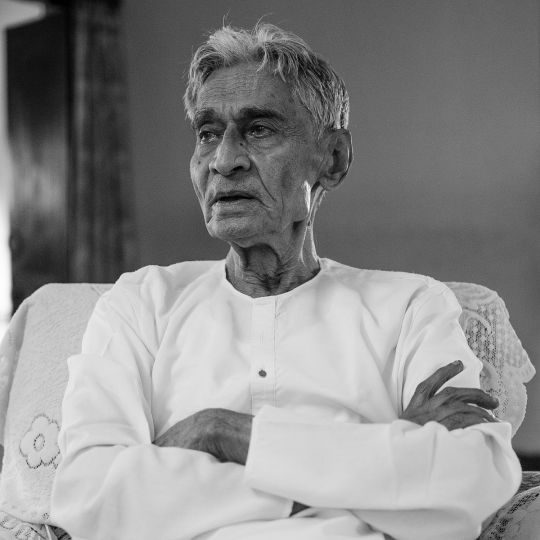
Today, we celebrate the birth anniversary of #VKMurthy, born on November 26, 1923, a legendary figure in Indian cinema. Best known for his collaboration with Guru Dutt, Murthy was not just a cinematographer but a visionary artist. His journey from being a violinist and a freedom fighter to becoming a celebrated cinematographer is a tale of resilience and talent.
Murthy’s career in films began with 'Maharana Prathap,' but his big break came as an assistant cinematographer in 'Baazi' (1951), directed by Guru Dutt. His exceptional work caught Dutt's eye, leading to a lifelong collaboration that included masterpieces like 'Pyaasa,' 'Sahib Bibi Aur Ghulam,' and 'Aar Paar.' Murthy’s work on 'Kaagaz Ke Phool' (1959), India's first cinemascope film, is particularly noteworthy for its innovative use of lighting and camera techniques, earning him widespread acclaim and awards.
His contribution to the Indian film industry was immense, particularly in the era of black and white films, where he created some of the most memorable images. His talent in creating visual poetry was recognized with prestigious awards, including the IIFA Lifetime Achievement Award in 2005 and the Dada Saheb Phalke Award in 2010.
After Guru Dutt's untimely demise, Murthy continued his artistic journey with directors like Kamal Amrohi, working on classics like 'Pakeezah' and 'Razia Sultan.' His ability to adapt and excel continued in his collaborations with filmmakers like Pramod Chakravarthy and Shyam Benegal, notably in the television series 'Bharat Ek Khoj.'
Murthy's innovation was not just limited to film; his training stint in London included working on the crew of 'The Guns of Navarone.' Back in India, he broke new ground in Hindi cinema and was instrumental in shaping the visual narrative of the time.
His journey from a passionate film enthusiast, who was initially refused admission to a film-making course, to becoming the cinematographer of India’s first cinemascope movie is a testament to his determination and skill. His legacy lives on in the frames he crafted, the stories he helped tell, and the history he created in Indian cinema. On his birthday, we honor and remember V. K. Murthy, a true pioneer in the world of cinematography.
4 notes
·
View notes
Text
Kaagaz (2021) Hindi Movie Download 720p filmyzilla
Kaagaz (2021) Hindi Zee5 Pankaj Tripathi full movie free direct download. Kaagaz online streaming. This movie available English subtitle.

Kaagaz (2021) 720p WEB-DL x264 IMDb: N/A/10 Language: Hindi Genres: Biography, Drama Director: Satish Kaushik Writers: Satish Kaushik Stars: Pankaj Tripathi, Sandeepa Dhar, Amar Upadhyay, Monal Gajjar Size: 914MB
— →>>Download 480p<<< — —
— →>>Download 720p<<< — —
Pankaj Tripathi from the lead character. Salman Khan made this film. This film's narrative revolves around Bharat Lal, declared dead in government records and fought his lifetime from the computer system.
youtube
Satish Kaushik stated, "I recall reading about the narrative of Lal Bihari Mritak from the paper for the very first time. I had been intrigued and motivated about his trip. Therefore I did lots of study on the events which happened in his lifetime. Finally, it felt like that story had been told to the world, and we could haven't asked for a much better generation companion Salman Khan Films & then ZEE5, to flaunt it. Now, it is only a click away for your viewers.
Kaagaz (2021) Full Movie Download 720p filmyzilla
The film is introduced by Salman Khan and can be directed by Satish Kaushik. The film's storyline revolves around the life span of Bharat Lal, aka Lal Bihari, out of Azamgarh, who fought a legal battle for two years to demonstrate he is alive.
Bharat, performed with Pankaj, is distressed to be shown alive. He's got a family, dreams, and hopes for his future, but his official deceased standing isn't allowing him to realize it. He tries all he can to maintain what's rightfully his. He requests that the village sarpanch signal the necessary records, files a court case, and renames himself as Bharat Lal Mritak (dead person ) to find the nation and the press's interest. He allies with those who've been termed dead as a result of absurd clerical mistakes.
How To Download Kaagaz Full Movie By Pankaj Tripathi
The film was made by Salman Khan Films and will be outside on Zee5 on January 7. The film tells the story of a single Bharat Lal, marked as dead' from the official government newspapers and can be waging war to reclaim his individuality.
Satish plays an acting part in the film as Bharat's attorney. While the latter puts a great deal of confidence in him can not be as smart as he's pretending to be. The critics highly praise Pankaj Tripathi's films and internet series in addition to the crowd. Before diving into the upcoming film Kaagaz of acclaimed celebrity Pankaj Tripathi, let us peek at his diverse characters from the films and tv web series.
— →>>Download 480p<<< — —
— →>>Download 720p<<< — —
1 note
·
View note
Photo







Kaagaz Ke Phool (1959) dir. Guru Dutt
#kaagaz ke phool#bollywood#guru dutt#Waheeda Rehman#indian cinema#hindi film#classic bollywood#50s movies#mubi
43 notes
·
View notes
Text

FAN ART | Kaagaz Ke Phool – Guru Dutt
Film director Suresh (played by Dutt) turns to alcohol when he loses custody of his daughter and, somehow more importantly, when his favorite actress decides not to perform at his studio after he casts her as Paro–a character from let's say an Indian version of Romeo and Juliet called Devdas (watch the 2002 version omg). By the time she tries to come back and help him, Suresh is too far gone for redemption.
A lot of moving parts in this film, and even more filler shots, but treat this movie like a work of art and you won’t regret the experience.
1 note
·
View note
Text
Bailgadi Lyrics - Kaagaz Ft. Pankaj Tripathi
Bailgadi Lyrics - Kaagaz Ft. Pankaj Tripathi #Bailgadi #Lyrics #Kaagaz #PankajTripathi #M.MonalGajjar #UditNarayan #AlkaYagnik #Songs #BollywoodSongs #SalmanKhanFilms #SKF #LyricsUpgrade #HindiSongs
Bailgadi Lyrics – Kaagaz Ft. Pankaj Tripathi, M. Monal Gajjar | Udit Narayan, Alka Yagnik Bailgadi Lyrics in Hindi & English –is a New Song from Bollywood movie of 2021 Kaagaz Sung by Udit Narayan and Alka Yagnik Featuring Pankaj Tripathi,M. Monal Gajjar. Music of BailgadiSong is Composed by Pravesh Mallick. Bailgadi lyrics are written by Rashmi Virag. Music label is SKF (Salman Khan…

View On WordPress
#2021#Alka Yagnik#B#bollywoodsongs#hindi lyrics#hindi songs#Kaagaz Movie#M. Monal Gajjar#Pankaj Tripathi#Pravesh Mallick#Rashmi Virag#Salma khan#SKF (Salman Khan Films)#Udit Narayan.
0 notes
Note
First of all, congratulations on 100 followers! 🎉🥳 That is such a milestone.
I love that this particular side blog of yours is for original studyblr content, that's why I follow it, because you only want to see the same reblogged post so many times. 😆
Anywho, my question is, since you're in India - what would you like to see the western studyblrs incorporate more regarding Indian culture? Like, do you have music, films, or books you could recommend that we try so that we know a bit more about India, its people, and its culture?
My own personal knowledge is sporadic history, food, and some hits from various Bollywood films...and Bahubali since it's on Netflix in my country, so I'm slowly watching it. And that y'all have snakes like we have ants/spiders.
And then for a less broad question that is geared more towards you specifically, what is it about math and physics that you love so much? Like what about them drew you towards them?
thank you so much!!!
yeah i understand what you're talking about XD. i made this blog to document my journey in the next two years, and maybe even later on!
my answer kinda turned into an essay, so the people who want to, can read it under the cut :D.
wow. that's such an interesting question!!
a preface that i want to give is: india is a very vast country with a mix of so many different cultures, that one person cannot possibly know about all the little nuances of each other's cultures. so whatever answer i give, it is from my personal experience, and it is not meant to invalidate the experiences/opinions of others!!
i think india is perceived to be an extremely conservative and traditional country, where people are extremely religious. and though that is true for certain people and families (as is true in all other countries as well), it does not apply to everyone. there are many people who don't really fit into the stereotype of being "indian". so i think the first thing for anyone is to familiarise themselves with any culture that they want to engage with, try to be open minded, and try to learn. (i think this applies to every culture/social group in the world).
another thing that i really don't like about the representation of india in hollywood movies is that it is always portrayed as an extremely poor nation (see: slumdog millionare), which is really, really not true. there are a lot more dimensions to india than being a poor country. there are a lot of places in india which look like a western country, but they're not shown in movies for some reason.
bollywood movies are thought to be all about dancing and music and illogical plots, and that misconception sticks, though there are many movies with pretty illogical plots in hollywood as well. a lot of the movies which are propagated as the best movies are really not the best. some of my favourite bollywood movies are:
anand (1971) : it's the story of a man with terminal cancer, and how he lives his last few months. really heartfelt, touching, and please get ready to cry a lot.
masoom (1983) : it's about a young boy who is the illegitimate child of a really rich man, who doesn't know that he has a boy. it's about how he adjusts to his father's life and family after his mother passes away. a very unique story.
taare zameen par (2007): this is maybe the first movie which talked about dyslexia in kids, and about the faults in our education system. another touching movie. i think it was called "like stars on earth" outside of india.
3 idiots (2009): i think this is one of the most famous bollywood movies of all time. it's about the pressure present on the students in engineering colleges in india. it talks about the undue stress put on students and subsequently, the rising rates of suicide. i'd call it a dramedy.
bajrangi bhaijaan (2015): this is another dramedy. really heartfelt, it is about a mute child who is separated from her mother when visiting india from pakistan.
some other movies which are considered classics, but i haven't watched them yet are:
pyaasa (1957)
mother india (1957)
kaagaz ke phool (1959) - or any guru dutt movie really.
guide (1965)
andhadhun (2018)
some other mentions of the top of my mind are:
hera pheri (2000)
golmaal (1979)
golmaal 3 (2010)
chak de india (2007)
sholay (1975) - this is one of the cult classics in india. extremely loved an famous.
drishyam (2015) (i've only watched the reamke, which was in hindi... the original is in malayalam)
jo jeeta wo sikandar (1992)
chichhore (2019) is cool as well.
the problem is, much of the humour of these movies might be lost in translation :(. also, you might come across a certain amount of misogyny, so please proceed accordingly!!!
i gave you an entire movie rec because i think that while we watch a movie from our own region, we don’t really see how our culture is embedded into it. but if someone, who is experiencing it for the first time, sees those movies, they can point out a lot of different things that we take for granted.
i think more than wanting other people to incorporate elements of the indian culture into their posts, what matters is trying to understand how different, yet similar a culture can be millions of miles away from you.
Also, about Bahubali!! I think Bahubali was made by absorbing a lot of the Indian (especially Hindu) epics. It has a lot of elements of Mahabharata (which is an epic I strongly recommend, not as a religious text, but because all the characters in it are deeply flawed. hence, i think it's a very realistic story.) i enjoyed Bahubali as well XD
food is a very big part of indian culture, and the variety in it is extreme. so many varying tastes that tasting a new dish feels like an experience.
we do have snakes, but not in urban areas. if you live near a forest/in an area with a lot of trees, yes, there can be snakes, but usually, the insects that cause the most nuisance are ants, lizards, cockroaches and spiders.
i think i really like math and physics because i find them interesting. there's just something about explaining the phenomena of the world with just these two tools that intrigues me. i love all sciences, and i do take avid interest in history, philosophy and political science (tho i don't express my opinions online), but i think what made me choose physics and math was the wonder i feel while studying them (i know, very cheesy). but, frankly speaking, i think it also depends on the environment you are brought up in. my family is pretty maths-y and science-y and i grew up in that environment, hence i think i developed an inclination to it.
also: if you find anything that i said wrong, please tell me and i’ll correct it!!
#i was kinda anxious to post this#but i think i will#also#sorry for the rant#i kinda let myself go with this one#it's REALLY long#but thank you so much for the ask!#asks#i think i left out some parts that i was going to talk about because of the length of this post
5 notes
·
View notes
Text
Shalimar 1978 Songs Pk

Shalimar 1978 Songs Pk Songs
Shalimar 1978 Songs Pk Subban
Shalimar 1978 Songs Pk Song
This will remove all the songs from your queue. Are you sure you want to continue? Clear currently playing song. One Two Cha Cha Cha(From 'Shalimar') Lyrics. Old songs indeed have an unmatchable aura from the rest of the songs. These songs, with the combination of meaningful lyrics and melodious tunes, helped in creating a great hype for their film. While some songs are famous by their title, some are famous by the cast that performs in the songs. SUBSCRIBE for the best Bollywood videos, movies, scenes and songs, all in ONE channel: On the run from the police, S.S. Kumar, a thief, comes across a private invitation to. About Us Shalamar Hospital is committed in the delivery of its tripartite mission of exemplary patient care, high-impact research and education. Over the last 44 years, Shalamar Hospital has evolved into a premier tertiary care medical facility with 500.
Category :Bollywood Songs
A number of songs about turmoil in relationships have been made in Hindi films. It’s not easy to get back to normal after a split with the one you love. This article showcases a detailed perspective of the best Bollywood Breakup songs and Heartbreak songs.
Parting ways with the one you love is never easy. Not every love story has a happy ending. The sentiments associated with a breakup have been expressed colloquially in Hindi films. Since its early days the Hindi film industry has depicted varied emotions centrifugal to lovers parting ways. Emotional turmoil is an aspect that has been thoughtfully captured through songs in Hindi films. Since the black and white era, songs about breakup and heartache have been exceedingly popular. Songs about lovers parting ways are exceedingly popular with Bollywood aficionados. People are able to relate with lyrics in breakup songs, and that’s why these songs are close to the heart of many.
Listeners are able to connect with emotions and feelings conveyed through breakup songs. Heartache and breakups is a bitter slice of reality that is painful, and it’s this pain that is expressed poetically through Bollywood breakup songs. The Hindi film industry is known for its high caliber lyricists. Lyricist’s give new life and meaning to songs with words. Lyrical melodies in Bollywood songs have charmed audiences in different decades. The warmth of emotion that oozes forth in Bollywood breakup songs has mesmerized audiences belonging to different age groups.
Breakup songs and heartbreak songs are popular with both youngsters and the older generation. While youngsters relate to present day songs, the older generation loves listening to sad songs from the decades gone by. The sentiments expressed through breakup songs in Hindi films have touched hearts. Emotive lyrics in breakup songs bring back memories of the past. Listening to songs about breakups or heartbreak help you deal with life as it comes. While opinions differ in regard with whether listening to breakup songs impact a person positively or negatively, the truth of the matter is lyrics in songs about heartbreak can only make you stronger and move forward for a better life.
The lines below showcase a comprehensive list of the best Bollywood breakup songs.
100 Greatest Bollywood Breakup Songs and Heartbreak Songs
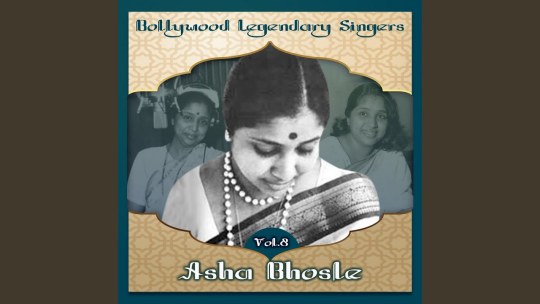
Tadap Tadap Ke- Hum Dil De Chuke Sanam (1999)
Jag Soona Soona Lage- Om Shanti Om (2007)
Tanahayee- Dil Chahta Hai- (2001)
Jeena Yahan Marna Yahan- Mera Naam Joker (1970)
Bin Tere- I Hate Love Stories- (2010)
Yeh Duniya Yeh Mehfil- Heer Ranjha (1970)
Kabira- Yeh Jawaani Hai Deewani- (2013)
Tum hi Ho- Aashiqui 2 (2013)
Saathi Re Tere Bina Bhi Kya Jeena- Muqaddar Ka Sikandar (1978)
Tu Jaane Na- Ajab Prem Ki Ghazab Kahani- (2009)
Jaane Tu Meri Kya Hai- Jaane Tu… Ya Jaane Na (2008)
Agar Tum Saath Ho- Tamasha (2015)
Teri Meri- Bodyguard (2011)
Tujhe Bhula Diya- Anjaana Anjaani- (2010)
Mora Piya- Raajneeti (2010)
Tere Bin- Bas Ek Pal (2006)
Pyaar Hai Ya Sazaa- Salaam-e-Ishq (2006)
Bhula Dena- Aashiqui 2 (2013)
Jab Rulana Hi Tha- Aggar (2007)
Tujhe Yaad Na Meri Aaye- Kuch Kuch Hota Hai (1998)
Pardesi Pardesi Jaana Nahin- Raja Hindustani (1996)
Tujhe Sochta Hoon- Jannat 2 (2012)
Woh Lamhe Woh Baaten- Zaher (2005)
Chaha Hai Tujhko- Mann (1999)
Tune Jo Na Kaha- New York (2009)
Dil Ke Armaan Aanshuo Main Beh Gaye- Nikaah (1982)
Sunn Raha Hai- Aashiqui 2 (2013)
Hasi- Hamari Adhuri Kahani- (2015)
Tere Liye- Veer Zaara (2004)
Zindagi Ka Safar- Safar (1970)
Laal Ishq- Goliyon Ki Rasleela…Ramleela (2013)
Hone So Batuyaan- Fitoor (2016)
Tere Naam- Tere Naam (2003)
Manchala- Hasee Tooh Phasee (2014)
Kaise Main Kahon Tujhse- Rehna Hai Tere Dil Main (2001)
Ae Dil Hai Mushkil- Ae Dil Hai Mushkil (2016)
Ab Tere Bin- Aashiqui (1989)
Lambi Judaai- Hero (1983)
Main Shayar Badnaam- Namak Haram (1973)
Alvida- D- Day (2013)
Main Tenu Samjhawan- Humpty Sharma Ki Dulhania (2014)
Chingari Koi Bhadake- Amar Prem (1971)
Re Piya- Aaja Nachle (2007)
Koi Yeh Kaise Bataye- Arth (1983)
Tere Bina Zindagi Se Koi- Aandhi (1975)
Din Dhal Jaaye Haaye- Guide (1965)
Hum Bekhudi Mein Tumko Pukare- Kala Pani (1958)
Jiye Toh Jiye Kaise- Saajan (1991)
Pyar Manga Hai Tumhi Se- College Girl (1978)
Waqt Ne Kiya Kya Hansi Sitam- (Kaagaz Ke Phool) (1959)
Mera Kuchh Saaman- Ijaazat (1988)
Dooriyan- Love Aaj Kal(2009)
Justjoo Jiski Thi Usko- Umrao Jaan (1981)
Teri Galiyon Mein Na Rakhenge- Hawas (1971)
Poochoo Na Kaise Maine- Meri Surat Teri Aankhen (1963)
Abhi Mujh Mein Kahin- Agneepath (2012)
Laayi Ve Ne Gayi, Tey Nibhayi Vi Na Gayi- Chalte Chalte (2003)
Bhare Naina- Ra. One (2011)
Do Pal- Veer Zaara (2004)
Yun Hasraton Ke Daag- Adalat (1958)
Zindagi Mein Koi Kabhi Aaye Na Rabba- Musafir (2004)
Dil De Diya Hai- Masti (2004)
Priya Priya- Dil (1990)
Toote Huye Khwabon Me- Madhumati (1958)
Hum Bewfa Hargiz Na Thay- Shalimar (1978)
Jiyien Kyun- Dum Maaro Dum (2011)
Aaoge Jab Tum Sajna- Jab We Met (2007)
Teri Yaad Aati Hain- Saudagar (1991)
Jeena Jeena- Badlapur (2015)
Jeeta Tha Jiske Liye- Dilwale (1994)
Dil Mera Churaya Kyon- Akele Hum Akele Tum (1995)
Who Shaam Kuchj Ajeeb Thi- Khamoshi (1969)
Mujhe Teri Mohabbat Ka Sahara- Aap Aye Bahaar Aye (1971)
Tu Pyaar Hain Kisi Aur Ka- Dil Hai Ki Maanta Nahi (1991)
Zindagi Ke Safar Mein Guzar Jaate- Aap Ki Kasam (1974)
Jaane Kahan Gaye Who Din- Mera Naam Joker (1970)
Koi Hota Jisko Apna- Mere Apne (1971)
Kya Hua Tera Wada- Hum Kisise Kam Naheen (1977)
Shikaayat Hain- Jism (2003)
Sach Keh Raha Hai Deewana- Rehnna Hai Tere Dil Mein (2011)
Aur Is Dil Mein Kya Rakha Hai- Imaandaar (1987)
Chod Gaya Balam- Barsaat (1949)
Banake Kyun Bigada Re- Zanjeer (1973)
Chupana Bhi Nahi Aata- Baazigar (1993)
Mere Toote Huye Dil Se- Chhalia (1960)
Mere Dushman Tu Meri Dosti Ko Tarse- Aaye Din Bahaar Ki (1966)
Mere Piya- Tere Mere Sapne (1996)
Toh Phir Aao- Awarapan (2007)
Shisha Ho Ya Dil Ho- Aasha (1980)
Awaarapan Banjarapan- Jism (2003)
Dil Lagane Ki Do Na Saza- Anmol (1993)
Achha Sila Diya Tune Mere Pyaar Ka- Sanam Bewafa (1993)
Yeh Safar- 1942: A Love Story- (1994)
Mera Yaar Mila Dey Saaiyaan- Saathiya (2002)
Koi Jab Tumhara Hriday Tod De- Purab Aur Paschim (1970)
Aye Ajnabi Tu Bhi Kabhi- Dil Se (1998)
Hum Thay Jin Ke Saharay- Safar (1970)
Ab Naam Mohabbat Ke Ilzaam Yeh Aaya Hain- Ghulam (1998)
Tota Tota Sajan Se Kehna- First Love Letter (1991)
Rula Ke Gaya Sapna Mera- Jewal Thief (1967)
Let us know how you like this article. Like it and Rate it below.
60.43K 3
4
Next Post
200 Greatest Hard Rock Love Songs and Rock Ballads
Shalimar 1978 Songs Pk Songs

200 Greatest Classic Bollywood Songs
The repertoire of classics in the Hindi film industry is incomparable. This article showcases a list of best classic Bollywood songs..
100 Greatest Bollywood Dance Songs For New Year Parties
The vibe Bollywood music brings onto the dance floor is like no other. The lines below showcase a list of the best Bollywood dance songs for New Year parties.
Shalimar 1978 Songs Pk Subban
Top 100 Bollywood Dance Songs For Freshers’ Parties
Music and dance is the essence of a freshers’ party. Students like to have a good time dancing to the tunes of different songs at a freshers’ bash.
Post Your Comment
tumbou
Oh my God Tujhey Bhula Diya is my all time favourite. It hits the cord straight of my heart. It's lyrics has so much reality in it. Zindagi Kay safar main guzar jaatay is another reality based song that brings tears
reply 0

biju
Music has become an integral part pf our daily life. If you listen music, you would not feel any pain.
Shalimar 1978 Songs Pk Song
reply 0

9 notes
·
View notes
Photo

Waqt ne kiya kya haseen sitam
[ Time has done such great injustice ]
Tum rahe na tum, hum rahe na hum
[ You're no longer you and I'm no longer me ]
Kaagaz Ke Phool (1959)
#kaagaz ke phool#indian cinema#hindi cinema#guru dutt#waheeda rehman#bollywood#old bollywood#indian films#films#movies#film stills#movie stills#cinematography#film scenes#movie scenes#cinema
32 notes
·
View notes
Photo

Kaagaz Ke Phool (1959, India)
Almost a quarter of the way through the twenty-first century, globalization has pierced the remotest corners of the planet. The examples academics and politicians cite demonstrating this globalization are almost always economic, but the most profound examples are cultural. Once known only in South Asia, Indian cinema has burst onto a global stage. Its stars and its most popular directors seem larger than life. Reading on some of modern Bollywood’s (Hindi-language cinema) personalities, I find few of their biographies compelling beyond their unquestionable status as South Asian and international celebrities – I won’t name names here because that is for another time. That is partly a result of not watching enough Bollywood films. It is also because I am making unconscious comparisons between those modern actors to actor-director Guru Dutt. Dutt was a tragic romantic – off- and on-screen – to the point where those personas can become indistinguishable.
As an actor, Dutt can be as charming a romantic male lead as anyone, as well as lend a film the dramatic gravitas it needs. As a director, he refined his sweeping visuals and theatrical flairs over time. That artistic development culminated with Pyaasa (1957) and his final directorial effort, Kaagaz Ke Phool (“Paper Flowers” in English). The latter film is the subject of this piece. Both films elevate themselves to a cinematic altitude few movies anywhere, anytime ever accomplish. They are, for lack of a better word, operatic* – in aesthetic, emotion, storytelling, tone. In Kaagaz Ke Phool, Dutt once again lays bare his artistic soul in what will be his final directed work.
An old man enters a film studio’s empty soundstage, climbs onto the rafters, and gazes wistfully at the darkened workspace below. We learn that this is Suresh Sinha (Dutt), a film director whose illustrious past exists only in old film stock. The film is told in flashback, transporting to a time when his marriage to Bina (Veena) is endangered – the parents-in-law disdain his film work as disreputable to their social class – and he is embarking upon an ambitious production of Devdas (a Bengali romance novel that is among the most adapted pieces of Indian literature to film, the stage, and television). He is having difficulty finding someone to play Paro, the female lead. Due to this conflict, Bima has also forbidden their teenage daughter, Pammi (Kumari Naaz), from seeing Suresh. Pammi is sent to a boarding school far from Delhi (where Bima and her parents reside) and further from Mumbai (where Suresh works), without any sufficient explanations of the spousal strife.
One rainy evening, Suresh generously provides his coat to a woman, Shanti (an excellent Waheeda Rehman). The next day, Shanti arrives at the film studio looking to return the coat. Not knowing anything about film production, she accidentally steps in front of the camera while it is rolling – angering the crew who are tiring of yet another production mishap. Later, while viewing the day’s rushes, Suresh casts Shanti as Paro after witnessing her accidental, but remarkable, screen presence. She achieves cinematic stardom; Suresh and Shanti become intimate. When the tabloid gossip eventually reaches Mumbai and Pammi’s boarding school, it leads to the ruin of all.
What did you expect from an operatic film – a happy ending?
Also starring in the film are Johnny Walker (as Suresh’s brother-in-law, “Rocky”) and Minoo Mumtaz (as a veterinarian). Walker and Mumtaz’s roles are vestigial to Kaagaz Ke Phool. Their romantic subplot is rife with the potential for suggestive humor (she is a horse doctor), but the screenplay never justifies their inclusion in the film.
Shot on CinemaScope lens licensed by 20th Century Fox to Dutt’s production company, Kaagaz Ke Phool is Dutt’s only film shot in letterboxed widescreen. From the onset of his directorial career and his close collaboration with cinematographer V.K. Murthy, Dutt exemplifies an awesome command of tonal transition and control. Murthy’s dollying cameras intensify emotion upon approach: anguish, contempt, sober realization. These techniques render these emotions painfully personal, eliminating the necessity of a few lines of dialogue or supplemental motion from the actor. The effect can be uncomfortable to those who have not fully suspended their disbelief in the plot or the songs that are sung at the time. But to the viewers that have accepted that Dutt’s films exist in a reality where songs about infatuation, love, loss, and regret are sung spontaneously (and where revelations are heard in stillness), this is part of the appeal. Dutt and Murthy’s lighting also assists in directing the narrative and setting mood: a lashing rainstorm signaling a chance meeting that seals the protagonists’ fates, the uncharacteristically film noir atmosphere of the soundstage paints moviemaking as unglamorous, and a beam of light during a love melody evokes unspoken attraction. That final example represents the pinnacle of Dutt and Murthy’s teamwork (more on this later).
As brilliant as his films (including this) may be, Dutt suffered during mightily during Kaagaz Ke Phool’s production. In writings about Dutt, one invariably encounters individuals who believe Dutt’s life confirms that suffering leads to great art. Though I think it best to retire that aphorism so as not to romanticize pain, I believe that the reverse is true with Guru Dutt – his later directing career contributed to his personal tribulations. In some ways, that suffering informed his approach to what I consider an informal semiautobiographical trilogy of his films: Mr. & Mrs. ’55 (1955), Pyaasa, and Kaagaz Ke Phool. Dutt directed and starred in each of these films. In each film he plays an artist (a cartoonist, poet, and film director, respectively); with each successive film his character begins with a greater reputation, only to fall further than the last. The three Dutt protagonists encounter hardship that do not discriminate by caste, professional success, or wealth.
For Dutt’s Suresh, he is unable to consummate his love for Shanti because the specters of his failed marriage haunt him still. He never speaks to his de facto ex, but marital disappointment lingers. Why does he bother visiting his stuffy in-laws when he knows they will never change their opinions about him? Abrar Alvi’s (the other films in the aforementioned informal Dutt-directed trilogy, 1962’s Sahib Bibi Aur Ghulam) screenplay is silent on the matter. Also factoring into Suresh’s hesitation is his daughter, Pammi. Pammi is young, looks up to both her parents, and cannot fathom a parent being torn from her life. Her reaction to learning about Shanti implies that neither of her parents have ever truly talked to her about their separation. Pammi does not appear to blame herself, but it seems that her parents – intent on protecting their child, perhaps speaking to her not as a soon-to-be young adult – are loath to maturely talk about the other. In a sense, Pammi has never mourned her parents’ marriage as we see her deny the tabloid reports about Suresh’s affair and express anger towards her father when she learns the truth.
When Suresh’s film after Devdas flops, his film career is in tatters. But Shanti’s popularity is ascendant, creating a dynamic reminiscent of A Star is Born. In a faint reference to Devdas, Kaagaz Ke Phool’s final act contains anxieties about falling into lower classes. If Kaagaz Ke Phool is contemporaneous to its release date, one could also interpret this as concerns about falling within India’s caste system (reformist India in the late 1950s was dipping its toes into criminalizing caste discrimination, which remains prevalent). Suresh’s fall is stratospheric and, in his caste-conscious, masculine pride, he rejects Shanti’s overtures to help him rebuild his life and film career. This tragedy deepens because Shanti’s offer is in response to the contractual exploitation she is enduring. We do not see what becomes of Shanti after her last encounter with Suresh, but his final scenes remind me, again, of opera: the male lead summoning the strength to sing (non-diegetically in Suresh’s case) his parting, epitaphic thoughts moments before the curtain lowers.
Suresh’s and Shanti’s respective suffering was preventable. Whether love may have assuaged his self-pity and alcoholism and her professional disputes is debatable, but one suspects it only could have helped.
Composer S.D. Burman (Pyaasa, 1965’s Guide) and lyricist Kaifi Azmi (1970’s Herr Raanjha, 1974’s Garm Hava) compose seven songs for Kaagaz Ke Phool – all of which elevate the dramatics, but none are as poetic as numbers in previous Dutt films. Comments on two of the most effective songs follow; I did not find myself nearly as moved by the others.
“Dekhi Zamane Ki Yaari” (roughly, “I Have Seen How Deeply Friendship Lies”) appears just after the opening credits, as an older Suresh ascends the soundstage’s stairs to look down on his former domain. The song starts with and is later backed by organ (this is an educated guess, as many classic Indian films could benefit with extensive audio restorations as trying to figure out their orchestrations can be difficult) and is sung non-diegetically by Mohammed Rafi (dubbing for Dutt). A beautiful dissolve during this number smooths the transition into the flashback that will frame the entire film. That technique, combined with “Dekhi Zamane Ki Yaari”, prepares the audience for what could be a somber recollection. However, this is only the first half of a bifurcated song. The melodic and thematic ideas of “Dekhi Zamane Ki Yaari” are completed in the film’s final minutes, “Bichhde Sabhi Baari Baari” (“They All Fall Apart, One by One”; considered by some as a separate song). Together, the musical and narrative arc of this song/these songs form the film’s soul. For such an important musical number, it may have been ideal to incorporate it more into the film’s score, but now I am being picky.
Just over the one-hour mark, “Waqt Ne Kiya Haseen Sitam” (“Time Has Inflicted Such Sweet Cruelty On Us”; non-diegetically sung by Shanti, dubbed by Geeta Dutt, Guru’s wife) heralds the film’s second act – Suresh and Shanti’s simultaneous realization of their unspoken love, and how they are changed irrevocably for having met each other. Murthy’s floating cameras and that piercing beam of light are revelatory. A double exposure during this sequence shows the two characters walking toward each other as their inhibitions stay in place, a breathtaking mise en scène (the arrangement of a set and placement of actors to empower a narrative/visual idea) foreshadowing the rest of the film.
Dutt’s perfectionist approach to Kaagaz Ke Phool fueled a public perception that the film was an indulgent vanity exercise with a tragic ending no one could stomach viewing. Paralleling Suresh and Shanti’s romantic interest in each other in this film, the Indian tabloids were printing stories claiming that Dutt was intimate with co-star Waheeda Rehman and cheating on Geeta Dutt. These factors – perhaps some more than others (I’m not versed on what Bollywood celebrity culture was like in the 1950s, and Pyaasa’s tragic ending didn’t stop audiences from flocking to that film) – led to Kaagaz Ke Phool’s bombing at the box office. Blowing an unfixable financial hole into his production company, Guru Dutt, a man who, “couldn’t digest failure,” never directed another film. Like the character he portrays here, Dutt became an alcoholic and succumbed to depression in the wake of this film’s release. Having dedicated himself entirely to his films, he interpreted any professional failure as a personal failure.
Kaagaz Ke Phool haunts from its opening seconds. Beyond his home country, Dutt would not live to see his final directorial effort become a landmark Bollywood film and his international reputation growing still as cinematic globalization marches forth. Dutt’s most visually refined films, including Kaagaz Ke Phool, are films of subtraction. The cinematography and music make less movement and dialogue preferable. Kaagaz Ke Phool is a film defined about actions that are not taken and scenes that are never shown. The result is not narrative emptiness, but a receptacle of Dutt’s empathy and regrets. Exploring these once-discarded, partially biographic ideas is not for faint hearts.
My rating: 9/10
^ Based on my personal imdb rating. Half-points are always rounded down. My interpretation of that ratings system can be found in the “Ratings system” page on my blog (as of July 1, 2020, tumblr is not permitting certain posts with links to appear on tag pages, so I cannot provide the URL).
For more of my reviews tagged “My Movie Odyssey”, check out the tag of the same name on my blog.
* I use this adjective not to reference operatic music, but as an intangible feeling that courses over me when watching a film. Examples of what I would consider to be operatic cinema include: Crouching Tiger, Hidden Dragon (2000, Taiwan); Greed (1924); The Red Shoes (1948); and The Wind (1928). Some level of melodrama and emotional unpackaging is necessary, but the film need not be large in scope or have musical elements for me to consider it “operatic”.
#Kaagaz Ke Phool#Guru Dutt#Waheeda Rehman#Kumari Naaz#Bollywood#Mehmood#Johnny Walker#Mahesh Kaul#Veena Sapru#Abrar Alvi#V.K. Murthy#S.D. Burman#Mohammad Rafi#Geeta Dutt#Asha Bhosle#My Movie Odyssey
40 notes
·
View notes
Text
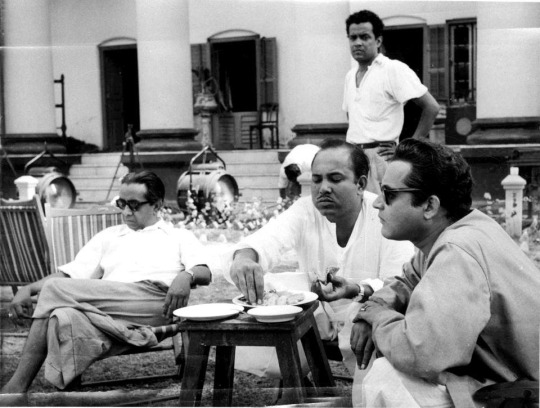
Remembering #AbrarAlvi, the illustrious screenwriter and dialogue writer in Hindi films, on his 14th death anniversary (18/11/09).
He was a key member of Guru Dutt's team and known for writing films like "Aar-Paar," "Sahib Bibi Aur Ghulam," "Kaagaz Ke Phool," "Pyaasa," and "Mr. & Mrs. '55." In 1953, while on the set of "Baaz," he met Guru Dutt. Dutt was struggling with a scene, and he offered a suggestion that impressed Dutt so much that he asked him to write "Aar-Paar." This led to him becoming a vital part of Dutt's team.
The films he worked on with Dutt are now considered classics worldwide. He also directed the successful movie "Sahib Bibi Aur Ghulam." He appeared in a touching three-part documentary about Guru Dutt, reflecting on their work together. This documentary was made by Channel 4 and is included in the DVD extras for "Kaagaz Ke Phool" and "Chaudhvin ka Chand."
After working with Guru Dutt and a controversy over who really directed "Sahib Bibi Aur Ghulam," he found it hard to make a mark as a director. But he continued to write screenplays and dialogues for many films, some of which were big hits, like "Professor," "Prince," and "Suraj." He also worked with Rajesh Khanna, writing for "Janta Hawaldar" and doing the screenplay and dialogues for "Begunaah."
In this photo, Director Abrar Alvi enjoys snacks in the company of #GuruDutt on the sets of the movie Sahib Bibi Aur Ghulam (1962).
4 notes
·
View notes
Text
Inspiration and positivity are what the entire human race is in dire need of during these uncertain times. The present blog acquires additional importance for us because the film it deals with is possibly one of the most motivational motion pictures produced by the Hindi movie industry in the past few years. Penned by the inimitable Javed Akhtar, and directed by Farhan Akhtar, Lakshya showcased the progression of Karan Shergil from an aimless, albeit good-hearted soul drifting through life into a dutiful officer of the Indian Army. Karan's path of self-discovery was not merely an entertaining watch; it was also about the vital role that initiative and determination could play in our lives. Thrown in the midst of a world pandemic after a hundred years, most of us have lost these amazing qualities up to some degree at least, which is probably why pondering over this film in particular seems to be a productive job at the moment. Ironically, a film that several people have drawn inspiration from over the years (people had actually joined the Army after watching Lakshya) had been declared a 'box-office flop' during the time of its release. In that aspect, Lakshya resembles classics like Kaagaz ke Phool, Mera Naam Joker, Pakeezah, Jane Bhi Do Yaaron, and Andaaz Apna Apna, all of which failed to take the box-office by storm, but went on to obtain cult status among viewers later. Astounding? Definitely. Great films sometimes fail financially without rime or reason and unfortunately, the same fate befell Lakshya.
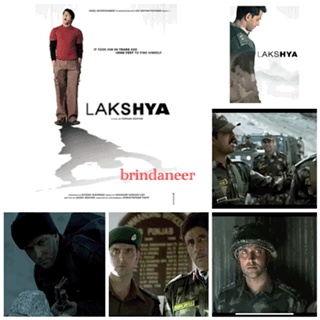
At its core, Lakshya was Karan's story and not a war film. The war and Indian Army provided a perfect setting for Karan to find his true calling. Nevertheless, intricacies of the Kargil war along with the destruction, desolation and pain that accompanied it, and which are also inevitably associated with all international armed conflicts in general, were far from being neglected in the story. A great writer is able to strike a balance between various dimensions of a plot without compromising on his actual intention, and who better than the legendary Javed Akhtar to achieve that? He was complimented by his talented son, the captain of this ship, who ably steered the film into a direction his father had envisaged while writing the script. Karan's metamorphosis from a lazy, casual college-going boy, perpetually confused about what he really wanted to do with life into a mature and responsible man was laced with humour and drama in equal measure, a strategy Farhan had previously employed while depicting Akash's journey in the epic 'Dil Chahta Hai'. Yet, the real genius lay in how different these two journeys actually were. Nobody could accuse Farhan of repeating what he had already done in his debut directorial venture.
Moments such as Karan listing his engagements of the day to Romi's (Preity Zinta) father upon being asked about his future plans in life and then literally hijacking that man's opinion on the importance of giving the best, no matter what the job was, to pacify his own father were examples of the witty humour we were talking about earlier. Of course, the actors took these scenes to a different level altogether. Hrithik’s delivery of ‘Main ye sochta hoon Dad’ after Karan had just rattled the ‘achcha ghaas kaatnewala’ lecture, and Boman Irani’s (Karan’s strict father) poker faced ‘Thik sochte ho’ in return have never failed to elicit roars of laughter from viewers till date. This wit pervaded most of the film’s first half as Karan continued his antics- the expression of his eternal confusion through the iconic ‘Main Aisa Kyun Hoon’ (apart from displaying Hrithik’s insane dancing skills through the choreography of the one and only Prabhu Deva, this sequence also aptly conveyed Karan’s inherent dilemmas), his decision of joining the Army only because another friend had promised he would come too, his disappointment upon being dumped by that friend, his ‘unconventional’ marriage proposal to Romi and his characteristic callousness as well as indolence even during his stint at the IMA were hilarious to say the least. Hrithik’s comic timing was pitch perfect in every scene, and perfectly suited for the nuanced, elegant genre of comedy that the script had aimed at.
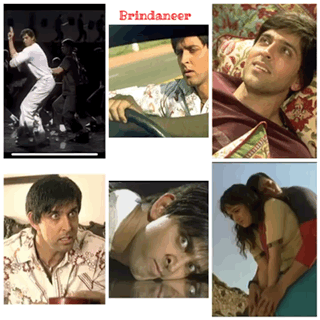
Just when we thought Lakshya was a hoot, Farhan introduced the dramatic element in it; and he did so with such subtlety and ease that the ensuing sequence of events seemed to be the only natural course for the film to take. The scene where Karan fell into the pool by sheer unmindfulness during one of his drills and got punished by his commanding officer was somehow able to generate a strange mixture of sympathy as well as laughter amongst the audience and proved to be one of the watershed moments in Karan’s story. Hrithik’s masterful portrayal of humiliation as Karan knelt in front of his fellow cadets engendered such palpable discomfort within us the first time that re-watching it remains difficult even now.

The Karan that emerged on the other side of this event was somewhat different. Staying true to his fickle-minded nature, he jumped the wall of IMA and fled home. Nevertheless, regret could clearly be observed on his countenance as he sat with his parents, head bowed in shame, forced to accept defeat in front of his father- a man, who had always underestimated him. The grievance in his eyes upon over-hearing Mr. Shergill's unfavourable opinion of him hinted not only towards Karan's underlying strong ego, but also revealed his latent desire to prove himself. The hurt ego, along with his heart, was eventually completely shattered when the one person who had genuinely believed in him refused to be a part of his life anymore. Romi, played by Preity Zinta with her usual vivacity and boldness, broke up with Karan at the same place where she had once agreed to marry him because he had failed to live up to even her expectations. For Karan, someone who had probably harboured feelings of inferiority ever since childhood because of incessant comparisons with his brother, this became the ultimate betrayal. As viewers, it was our interpretation that he never really understood Romi’s point of view; he only attributed one primary meaning to her actions- her belief in his worthlessness. Looking at this entire sequence from a neutral perspective, one might say that both Karan and Romi deserved some empathy from each other. Karan’s lack of conviction in everything he did naturally upset Romi to a point where she could not imagine spending the rest of her life with him. Can we really blame her? As far as Karan was concerned, he had to bear rejection from someone, who, he had hoped, would never judge him like his dad. Before this, he had been able to bear the brunt of his father's expectations because of the security that his relationship with Romi provided him. However, when she pushed him away, he truly hit bare ground, with no one to break the fall. The scene that followed the break-up will possibly remain one of the best pieces of emotional acting in Hrithik’s career forever. As easy as it might seem, crying your heart out on screen can actually be very difficult in practice. Hrithik obviously nailed the sobs, but more importantly, he conveyed his character’s rancour towards Romi most effectively through the unspoken hurt in his eyes, thereby suitably justifying the transition Karan would undergo next.
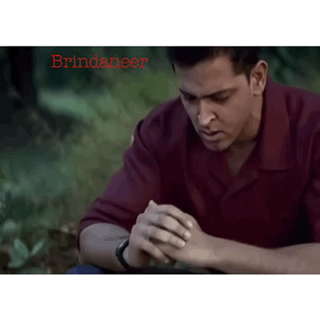
With no comfort zone left for him to turn to, Karan did what his parents, especially his father, and Romi had always wanted him to do. He grew up. He could have sulked like a petulant child and continued to live a directionless life like he had done previously. Instead, he chose to prove himself to Romi and made that his life’s goal. Ironically, Romi had disapproved when he insisted on joining the army earlier because she felt he was doing it to rebel against his father. But this was a different Karan. He was not rebelling anymore. He was trying to show Romi that he could be much more than what everyone thought about him. Sub-consciously, it was not just she who was the reason for this transformation; rather, it was both his dad and her.
Karan’s second stint at the IMA provided viewers with some of the finest moments in the film. His dedication towards learning and training, initial isolation and finally, amalgamation into the student community were fascinatingly depicted through the brilliant title song ‘Haan yahi rasta hai tera, tune ab jana hai, Haan yahi sapna hai tera, tune pehchana hai, tujhe ab ye dikhana hai......Roke tujhko aandhiyaan, ya zameen aur aasmaan, payega jo lakshya hai tera....Lakshya ko har haal mein paana hai’. Now, let us take a brief moment to acknowledge the terrific music by Shankar-Ehsaan-Loy which truly set the mood for the film. This song in particular struck a chord with us because of the simplicity and eloquence with which it expressed the inherent message of the story. The picturization was top-notch with several nuances throughout. Few moments stand out even now such as Karan passionately screaming ‘Dhawa’ during his drill, something he had been completely casual about earlier, Hrithik’s unflinching eye-contact with the CO who had previously punished him indicating that Karan was a changed man now, and Karan’s increasing camaraderie with his batch mates.
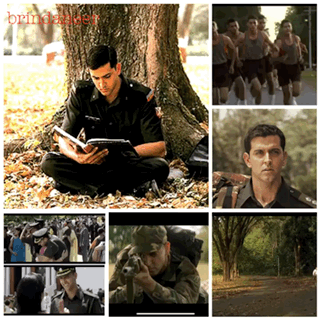
The song was followed by two important sequences, superb for the understated nature in which they expressed first Karan’s unspoken resentment towards his father, and then, his blatant grievance against Romi. In the first, Karan’s mother informed him that his dad had wanted to attend his graduation ceremony but could not ultimately, and in the second, Karan himself called Romi to inform her that he was finally a lieutenant of the Indian Army. At this point of time, talking about Hrithik’s acting probably seems redundant. So, we apologize for the redundancy (What? Did you think we would stop talking about it? 😱😱). Karan’s casual brushing away of his mother’s statement about Mr. Shergill conveyed volumes about how he had ceased to expect anything from his father; it also revealed the disappointment he felt, courtesy of Hrithik’s amazingly layered performance. Similarly, his delivery of ‘Saare faisle tum nahin kar sakti Romi’ was spot-on. It was optimally hurtful, just like it was supposed to be.
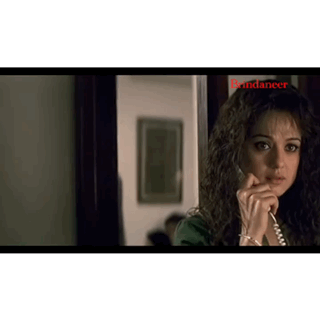
As his job brought Karan to Kargil, Ladakh, and he met his commanding officer, Colonel Damle, played to usual perfection by the enigmatic Mr. Bachchan who managed to captivate the audience completely during the few brief moments he had in the film, as well as other colleagues, the lines between proving himself to the two important people of his life and finding his true ‘Lakshya’ began to blur. By his own confession, he had never thought about the significance of being an ‘Indian’ until his senior colleague Jalal Akbar (a brilliantly natural Sushant Singh) took him to the border (pretty prophetic that Hrithik himself went on to play a different Jalal Akbar later in his career, right?). In all honesty, a considerable section of the audience probably felt the same too. The stunning Trans-Himalayan locales shot so artistically definitely added to this feeling, although any border area is usually capable of engendering such thoughts. The landscape of Ladakh has a strange haunting quality about it, and that played a substantial role not only in making the film a visual treat but also metaphorically with respect to Karan’s journey.
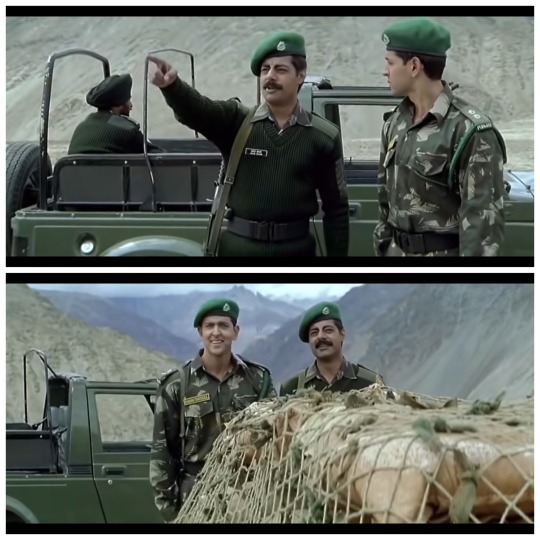
As he truly began to love his job, Karan realized that he was finally ready to let go of his ego as far as Romi was concerned. Unfortunately, Romi, after a lot of thought, and pining for Karan, had decided to move on with life, much to Karan’s shock and dismay. The scene where he stood outside the venue of her engagement and watched her laughing with her fiance was one of a kind for the lack of melodrama that usually accompanies such sequences. Its speciality lay in the director’s nuanced handling of emotions and the actor’s terrific portrayal of subtle poignancy.
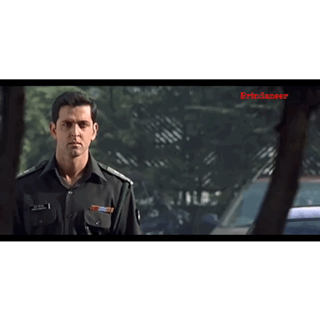
Run down and broken by the trials of his life, Karan returned home to his parents, only to receive news that his leave had been cancelled, and that he was urgently required to return to base. The moment where he bid goodbye to his parents was the first time when his father openly expressed love and concern for him, although not exactly in those words. The visible tension on Mr. Shergil’s face as he lost his cool and asked Karan to tell the complete truth was a testimony to his worry for his son who was about to go to a border area amidst serious disturbances. The part where Karan hugged his mother and left with just an uncomfortable glance towards his dad was another of those amazing subtle moments which characterized Farhan’s direction for this film. Hrithik’s discomfort and Boman Irani’s disappointment were both heart-rending to watch and as a viewer, one really wanted to reach out and give both of them hugs. A special thanks to Farhan and whoever was in charge of casting for signing Boman Irani in this role. Hrithik and his scenes were like mini acting classes that aspiring actors could take tips from.
Sometimes, it is difficult to get on with life, more so after losing one’s love forever like Karan had, but military training had instilled a sense of duty and discipline in him that was impossible to ignore. Of course, he had already begun to find a deeper meaning in his life through his job, especially after spending time with his superiors and colleagues. And, so he marched on. Had Romi seen his sense of responsibility even during a time when his personal life was in turmoil, she would have been proud. However, the realization that this was his true calling was probably yet to come to Karan. It did, in phases as he learnt about the war situation from Colonel Damle, and then embarked upon it.
If two people are destined to meet, even the universe conspires to bring them together. The same thing happened with Karan and Romi as they crossed paths unexpectedly in Kargil, of all places. The scene where they saw each other amidst a convoy of army vehicles is absolute poetry. Kudos to Preity for being so natural with her expressions always; she was brilliant in every scene, and especially here as Romi’s eyes changed from pure surprise on finding Karan there to a subtle melancholy and probably hope ( ?) at the thought of their future interactions. Hrithik, as usual, was spot-on with Karan’s ‘seeing a ghost’ expression as he moved past her, without getting an opportunity to satisfy his curiosity regarding her presence there.
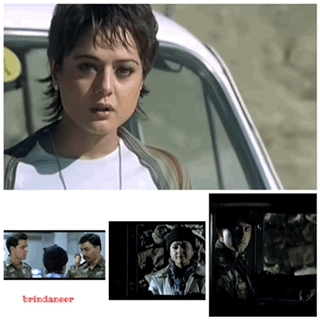
Their next exchanges were laced with intense angst, but not of the typical Bollywood kind, rather much more controlled and nuanced. The part where Karan, after knowing about the demise of his good friend Abir (from the IMA) found his other pal Saket (Abir’s closest friend) venting out at Romi requires special mention because of the seamless manner in which it shifted from a discourse on the necessity and morality of war to a fantastic interaction between the lead couple, their first face-to-face conversation since the break up. It was formal, yet intimate; mundane, yet special; filled with hope for more on Romi’s part, and discomfort as well as suppressed anger on Karan’s. This scene was followed by his a little mean ‘pata nahin’ when Romi asked him if he had decided whether they should meet or not, and his angsty ‘congratulations’ for her engagement. Of course, the poor guy had no idea that she had broken it off after finding out that her fiance who was apparently a highly motivated successful individual was also a narrow-minded chauvinist. The irony of life! Once again, kudos to the genius of Farhan Akhtar. Without even mentioning it, he managed to point out the difference between Karan and Rajeev, and it was clearer than ever why Romi loved Karan. Remember ‘Maine aj tak tum mein koi choti baat nahin dekhi’ ? However, Romi obviously did not explain the truth to Karan. It was truly frustrating at times to see these two souls so much in love with each other, and yet unable to let go of their stubornness. Nonetheless, the frustration could be borne because of the brilliant intensity of their scenes and the wonderful chemistry these two shared. Truly, we do not talk enough about Hrithik and Preity’s amazing on screen bonding. We really should!
Karan eventually found out about Romi’s broken engagement from a letter his best friemd Ashu had sent him a while back. Hrithik’s expression of shock portrayed the extent to which the news had unsettled Karan. Incidentally, just when love had given him a second chance, Karan encountered death more closely than ever. After an initial victory during the first battle (the one in which he had saved the life of a senior officer, and killed opponents for the first time; also possibly the one where he began to realize that serving his country had started becoming his passion), Karan and his battalion were massively defeated in the second and several lives were lost, including his close colleague, Captain Akbar’s. The scene where Akbar succumbed to his injuries in front of his best friend, Dr. Sudhir (played by the late Abir Goswami, may he rest in peace too) who tried desperately to resuscitate him while motivating the gasping man with remarks such as ‘aam khane jana hai na’ can make people cry anytime without manipulating their emotions or forcefully tugging at their heartstrings. In fact, this was true for every battle sequence in Lakshya, which made it one of the best war movies Bollywood had ever made. Notably, the script treated every character with sufficient respect including even the ones who had screen times of just a few minutes. Everyone had a well-crafted story arc, however small it might be but integral to the movie. Most importantly, not for one second did we feel that Karan had taken up the screen space of others.
The best example for this was provided by the great late Om Puri ji, who played the role of Subedar Pritam Singh. Of course, if you have the privilege of casting an actor of his calibre, your can rest assured of the outcome. Acting is at its best when it does not feel like enactment, and not many actors are more natural than Om Puri ji! Appearing on screen for not more than four to five scenes, he delivered some of the most profound dialogues in the film. He explained to Karan how a soldier knew better than anyone about the destructiveness of war; yet he had no other option but to be a part of it. When Karan asked why wars took place, he pointed out that human greed had drawn boundaries upon the earth’s surface and if it were in their hands, men would partition the moon too. How true it rings, especially now. People are actually talking about ‘making life interplanetary’. If it ever happens, countries are going to fight about demarcating territories there.
Moving on! Excuse the length of this blog please! A film like Lakshya has so many subtle intricacies that it becomes impossible to leave out scenes. But don’t be impatient please. We have almost reached the end of our ‘Lakshya’. A few sequences still deserve mention. First, the iconic ‘Tum kehti thi na Romi meri zindagi mein koi lakshya nahin hai?’ The defeat accompanied by the loss of close friends and colleagues had augmented Karan’s determination to win but our hero had also finally discovered his passion, his true calling. In moments when such epiphanies occur, is there anything else left to do other than crying? Probably not. That was exactly what Karan did. As usual, Hrithik’s performance elevated the quality of this scene, like so many others. The part where Karan pledged to Colonel Damle that either he would execute the mission successfully, or he would not come back alive was again equally impactful because of both Hrithik and Mr. Bachchan. The way Colonel Damle looked at his officer after this momentous declaration conveyed the immense pride, gratitude and grief he felt at that moment. Truly, Mr. Bachchan needs no dialogues to express emotions. His eyes do it all. And the same is true for Hrithik too.
Now, its time for our favourite scene in the movie. You guys must be thinking that we agree on everything. Well, we do agree a lot, but disagreements occur too. However, there was no disagreement on this one. We think its a lot of other people’s favourite too. You are right! We are talking about the scene in which Karan called his dad. This was on the night before the final mission- a mission that was near suicidal. Upon seeing his colleague Vishal take off his engagement ring and put it in an envelope, Karan finally acknowledged what he was running away from; something that he had buried deep down in his sub-conscious- his conflicted emotions towards his father. The knowledge that he might no longer be alive for a resolution made Karan pick up the phone and dial his number. Here is an anecdote in this context. When Boman Irani started shooting for his part in this sequence, Hrithik’s lines were being read by an AD, and Mr. Irani could not get his shot right because he was not able to get the proper feel. Acting is a lot about reacting, and the non-impactful delivery by the AD hampered Mr. Irani’s shot. Finally, the person in charge of the sound came to his rescue and Hrithik’s dialogues were played in audio (Hrithik’s part had already been shot by then) to which Boman Irani reacted. And what an outcome. This is the true mark of a great actor; he not only excels himself but helps others soar too. And what an honour to have helped an ace actor like Boman Irani! The performances by both in this scene were superlative and manage to leave us with lumps in our throats even today.
In his first ever heart-to-heart with his dad, Karan confessed that he had always disappointed his father and told him that he was aware of it. In return, his dad who initially had thought Karan had called his mom, finally told him how proud he was of him. A salute and heartfelt gratitude to all the parents out there who send their children to serve in the security forces so that civilians can live in peace. The smile on his son’s face was proof that he could die happy. The tears in both their eyes expressed the craving they had towards each other; the dejection that Karan had always felt upon being ‘ignored’ by his father was replaced by the understanding that his father had always loved him; the pain on Mr. Shergill’s face portrayed his disappointment for waiting so long to convey his love to Karan- so long that there was a chance he might never see him again.
Having poured his heart out to his dad, Karan finally set out to achieve his Lakshya of recapturing Point 5179 and hoisting the Indian flag on it, but not before a much needed conversation with Romi. What an amazing bond these two shared. Karan did not need to tell her explicitly that he knew about her broken engagement; she did not have to tell him that she still loved him. They just knew. Her ‘to phir main zindagi bhar intezaar karungi’ was far more intense than a conventional ‘I love you’. The beauty of this scene lay in the complete lack of melodrama which one usually associates with Bollywood scenes of this kind. No over the top background score, no hysterics, not even a hug! And the fact that they wanted to hug, but could not (because Karan’s seniors were waiting) made this moment even more poignant. Hrithik and Preity were the epitomes of subtlety here. The frustration of not even being able to touch each other before Karan left for a life threatening assignment was so tangible that even the audience imbibed it. Seriously, why did not Hrithik and Preity work more? They were so attuned to even each other’s silences!
The final mission proved the truth of Romi’s words. ‘Jis din usne decide kar liya ki use kya karna hai, aap dekhna wo kahan se kahan pohochta hai’. Indeed, Karan reached the peak of success, literally and metaphorically. The mountain-climbing scene deserves a special mention here. It was so perfectly done that the only comparison that comes to mind is the famous rock-climbing sequence in ‘The Guns of Navarone’ by the iconic Gregory Peck. And in all fairness, Captain Mallory only climbed a cliff; Captain Shergill had to climb a peak of the Trans Himalayas! Jokes aside, both scenes shall forever remain goosebump- inducing. Karan, obviously hoisted the Indian flag, and just in time. Boy, did he make Colonel Damle proud or what?!
Thanks to our friend Mita for this wonderful VM .
There is a saying that everything works out in the end, and if it does not, it is not the end. It indeed did happen that way for Karan. He found his goal, and achieved it too. As he walked out of that elevator, and hugged his dad finally, we surely did feel contented. And who said Mr. Shergill did not know his son? Well, he might have taken time, but now he understood him better than most. When Karan’s mother asked if they could go home, he objected. Go home? What NO! Karan had to go and fulfill his other 'Lakhshya’, right?
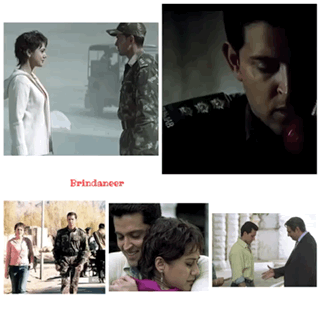
How wonderfully thoughtful of Romi to stand at a distance from Karan’s parents, wanting to give them the private space that they needed! Actually, kudos to the director for his sensitivity; such subtlety is not something that we frequently see in Bollywood. So thank God for ‘Lakshya’. Just like Karan’s story ended on a positive note as the camera focussed on him and Romi, holding hands, finally embracing each other, ready to step in to a new chapter of their lives, we also end this blog with a bit of optimism.. Let us all hope and pray that ‘Hum Jeetenge Ye Baazi’ (modifying Javed Akhtar’s line a bit) on behalf of every Indian, and every person in the world dealing with this pandemic.
P.S. This blog is dedicated to all the front-line workers (doctors, nurses, other medical personnel, medical suppliers, delivery executives, grocery storekeepers, and all other emergency personnel) who put their lives in danger everyday so that we may survive. Please know that you are always in our prayers. Also, let us all hope that no one remains shy of masks and vaccines anymore. Those are the most effective ways of countering this virus. Stay safe everyone!
1 note
·
View note
Photo





Kaagaz Ke Phool (1959) dir. Guru Dutt
the most romantic scene in all of cinematic history?!? maybe!!!!
#kaagaz ke phool#bollywood#guru dutt#Waheeda Rehman#indian cinema#hindi film#classic bollywood#50s movies
48 notes
·
View notes
Text
★ Betting big on Salman Khan's first film post pandemic?!
March,2021
Sources say Zee Studios snaps up Salman Khan's Radhe: Your Most Wanted Bhai for Rs 235 crore; actioner to stream on ZEE5 after theatrical run.
Following his last production Kaagaz, Salman Khan has further solidified his professional collaboration with Zee Studios. Sources reveal that the studio has bought the superstar’s next, Radhe: Your Most Wanted Bhai, for a whopping Rs 235 crore, thus setting a new high in Hindi film deals post the pandemic. While the distribution and streaming rights of most movies so far
— including Khan’s past offerings — have been sold to different entities, this deal apparently includes the consolidated rights of distribution, music and video-streaming.
The contract was closed early last month, but the details are trickling in now as the studio is taking final calls on the way ahead as the Jackie Shroff, Randeep Hooda and Disha Patani-starrer readies for a May release. A source reveals, “Earlier, there was talk of Radhe being a hybrid release. However, it was finally decided that the cop caper will hit theatres across the country on Eid. Plans are afoot to make it one of the biggest Bollywood releases in the new normal. After the film has enjoyed its theatrical run, it will premiere on ZEE5.”
mid-day reached out to the film’s spokesperson, who remained unavailable for comment.

1 note
·
View note
Text
Laalam Laal Lyrics - Kaagaz
Laalam Laal Lyrics - Kaagaz #LaalamLaal #lyrics #Kaagaz #RajnigandhaShekhawat #PraveshMallick #Aseem #PankajTripath #Songs #SKF #SalmanKhanFilms #SalmanKhan #BollywoodSongs #NewSongs2021 #LyricsUpgrade
Laalam Laal Lyrics – Kaagaz | Rajnigandha Shekhawat | Pravesh Mallick | Aseem | Pankaj Tripath Laalam Laal Lyrics in Hindi & English –is a New Song from Bollywood movie of 2021 Kaagaz Sung by Rajnigandha Shekhawat & Sawani Mudgal Featuring Pankaj Tripathi, Sandeepa Dhar, Vijay Kumar. Music of Laalam Laal Song is Composed by Pravesh Mallick . Laalam Laal lyrics are written by Aseem Ahmed…

View On WordPress
#2021#Aseem Ahmed Abbasee#bollywoodsongs#hindi lyrics#hindi songs#Kaagaz Movie#L#Nishant Kaushik#Pankaj Tripathi#Pravesh Mallick#Rajnigandha Shekhawat#Salma khan#Sandeepa Dhar#Satish Kaushik#Sawani Mudgal#SKF (Salman Khan Films)#Vijay Kumar#Vikas Malu
0 notes